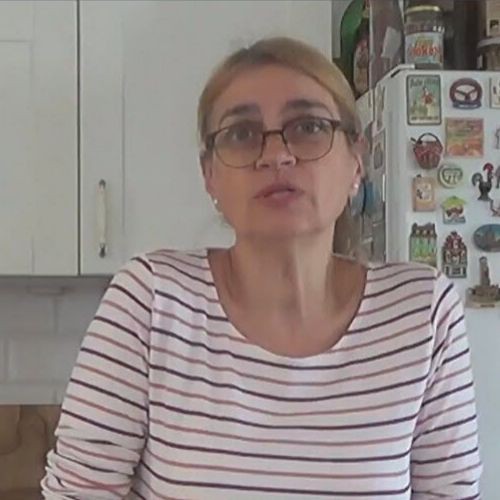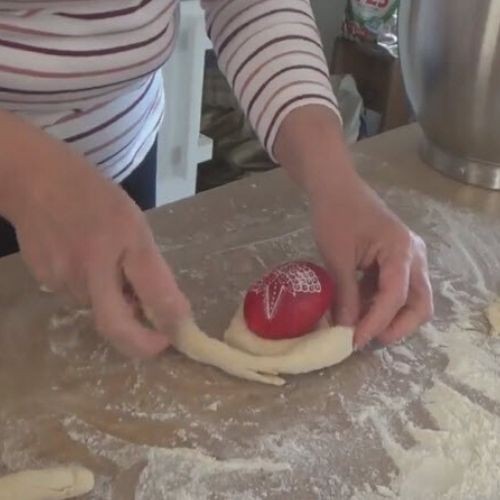Museums, galleries, concert halls, chitalishta (community culture clubs) have, for two months, been empty of people. For an obvious reason – they are all subject to the restrictive measures during the pandemic. Our material world may be restricted, but the spirit cannot be quarantined. Humans have always striven to learn something new, to live a full life, to work and look forward to the days of leisure.
In an endeavor to keep the contact with its public alive, one of the most popular museums in Sofia – the Ethnographic Museum - took its programme online. With much ingenuity and enthusiasm, the researchers have continued to be helpful to the public by taking their efforts online. They posted a new video on the museum’s social media profile dedicated to the spring feast days. Their contact with the public is interactive and anyone can post a photograph or share their own experience of the topic the museum suggested – old techniques of painting Easter eggs, making and decorating ritual loaves, the intricacies of home-made leaven which makes home-baked bread and pastry so much tastier.
The video demonstration of how ritual bread is made was given by the director of the Ethnographic Museum herself – Dr. Iglika Mishkova.
 “Feast days are a time which brings us together, setting us apart from our work days. The period of isolation is a perfect opportunity to involve the entire family in the preparations. That is why we decided to start with postings on our Facebook profile,” she told Radio Bulgaria and added: “It was all done from home, my own home – I demonstrated the way I myself and my family prepare for the feast day.”
“Feast days are a time which brings us together, setting us apart from our work days. The period of isolation is a perfect opportunity to involve the entire family in the preparations. That is why we decided to start with postings on our Facebook profile,” she told Radio Bulgaria and added: “It was all done from home, my own home – I demonstrated the way I myself and my family prepare for the feast day.”
“In Bulgarian tradition bread is the bloodless sacrifice. It is something we cherish and an essential element of the table we set for any holiday. Initially, our forefathers made ritual bread at Easter and only later, after the country’s liberation in 1878 did sweet bread, kozunak, make its way in the country.”
Now people are reverting to a slower pace of life giving us a wonderful opportunity to give our closest ones more of our attention. “The time spent at home is an opportunity to appreciate everything we had – even going to work as a daily process,” Iglika Mishkova says.
 As a way to go back to an old but forgotten tradition, the ethnologist suggests a demonstration of how to make leaven at home. “The technology is slow and requires attention but making leaven teaches one to be patient,” Iglika Mishkova says and adds:
As a way to go back to an old but forgotten tradition, the ethnologist suggests a demonstration of how to make leaven at home. “The technology is slow and requires attention but making leaven teaches one to be patient,” Iglika Mishkova says and adds:
“If you wish to make leaven and use it instead of ready-made yeast you should know that any time of year is suitable. The only requirement is to “feed” the leaven for a longer period, around one week, with flour and water. It needs a little bit more attention but leaven makes the kozunak so much tastier, more fragrant and even more beautiful to look at. In our tradition, and in folk songs, there are two feasts that go together – “red Easter and green St. George’s Day”. For St. George’s Day, 6 May, we shall tell the story of the feast day itself, connected with the work people do, not just the festive meal. We are considering different options, we are working on the topic so we can give our public information that is interesting and helpful.”
Photos: Marta Ros, Facebook/ National Ethnographic Museum - BASCanadian writer of Egyptian origin Eric Chacour is a quest of Radio Bulgaria during his visit to Sofia as one of the visiting speakers during the Month of Francophonie organized by the French Institute in Bulgaria . His award-winning debut novel Ce..
The upcoming exhibition of Bulgarian artist George Papazoff in Zagreb on 5 May 2025 was the focus of a meeting at the Bulgarian Embassy in the Croatian capital. The discussion brought together Diana Glasnova, Secretary General of the..
The Sofia Opera has been invited to open the opera season in Salerno, Italy on April 11 and 13 with a performance of the second part of Richard Wagner's tetralogy Der Ring des Nibelungen (The Ring of the Nibelung) - Die Walkure (The Valkyrie). This..
The upcoming exhibition of Bulgarian artist George Papazoff in Zagreb on 5 May 2025 was the focus of a meeting at the Bulgarian Embassy in the Croatian..
Canadian writer of Egyptian origin Eric Chacour is a quest of Radio Bulgaria during his visit to Sofia as one of the visiting speakers during the Month..

+359 2 9336 661
